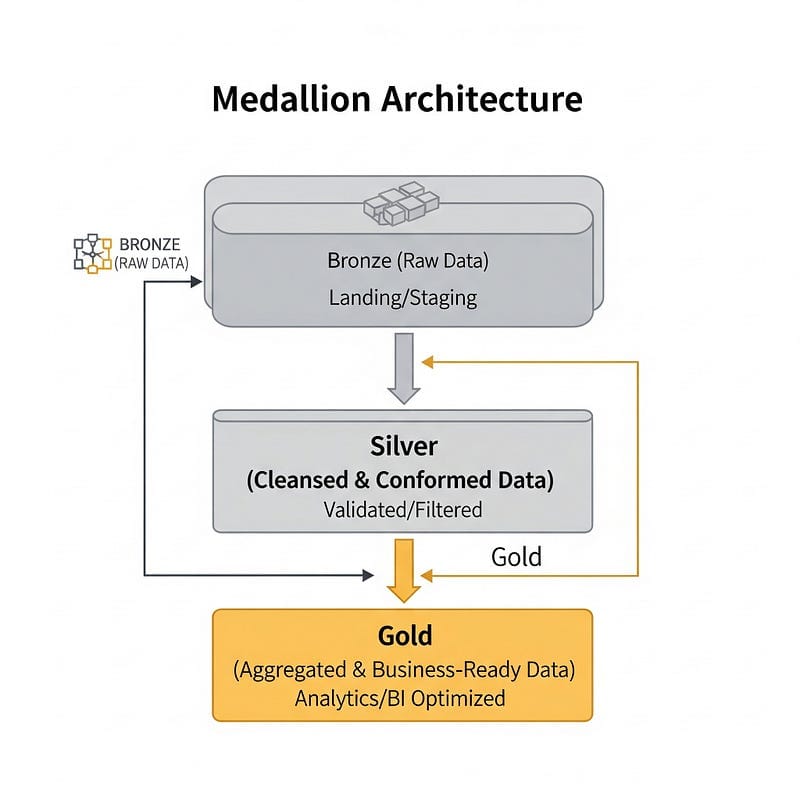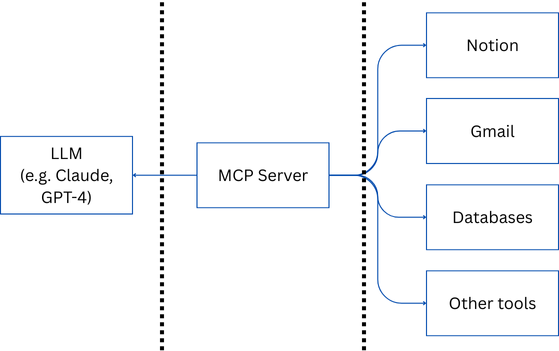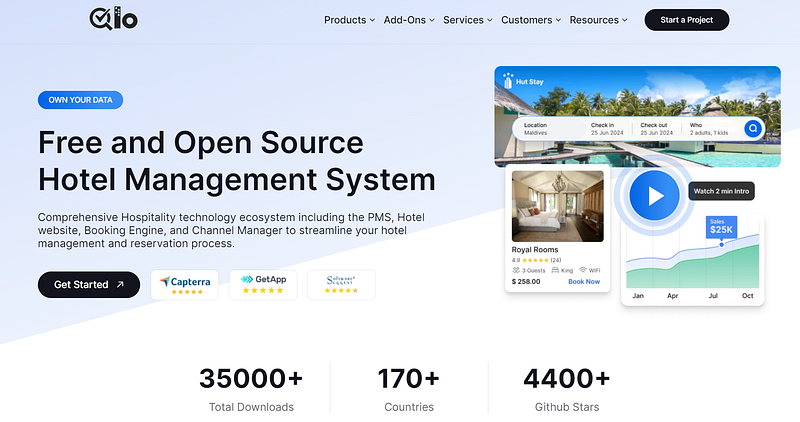A Snapshot of Malaysia’s Solar PV Programs: Powering a Greener Future
Malaysia is significantly advancing its commitment to renewable energy (RE), with solar photovoltaic (PV) technology playing a pivotal…

Malaysia is significantly advancing its commitment to renewable energy (RE), with solar photovoltaic (PV) technology playing a pivotal role. The nation is transitioning from earlier incentive models to a more diverse and market-driven approach to achieve its ambitious goals of 40% RE in its energy mix by 2035 and 70% by 2050. This overview explores the key solar PV programs shaping Malaysia’s green energy landscape.
Read the full article for free : https://aimanhaziq.my/a-snapshot-of-malaysias-solar-pv-programs-powering-a-greener-future-d5e7aac6cb53?sk=a7792aa0f6235accad90fe0abd3b5110
The Evolution of Solar Initiatives
Several key programs have marked Malaysia’s journey into solar energy, each designed to cater to different scales and consumer types:
1. Feed-in Tariff (FiT): The Pioneer
Launched in 2011, the FiT scheme was instrumental in promoting early investment in RE by offering premium prices for electricity generated from renewable sources. Administered by the Sustainable Energy Development Authority (SEDA) Malaysia, it guaranteed grid access and a predetermined price for RE producers. The overall cap for RE installation under FiT was 30 MW, with projects exceeding this requiring special ministerial approval. To fund this, a 1% surcharge was imposed on electricity bills, though consumers using less than 300 kWh monthly or with bills under RM77 were exempted.
While crucial for kickstarting the RE sector, contributing to an installed PV capacity of approximately 295.54 MW under the scheme by the end of 2016, the FiT program was gradually phased out for solar PV in 2015 for commercial and industrial sectors, and in 2016 for residential use due to its high funding costs and long-term sustainability concerns.
By the end of June 2019, SEDA had approved 12,540 FiT applications across all RE types, totalling 1,744.38 MW, of which 25.4% (approximately 443.06 MW) was allocated to solar PV projects. Of these, 10,254 projects had achieved commercial operation, contributing 621.96 MW to the grid, with solar PV accounting for 61.8% or approximately 384.1 MW of this operational capacity.
Rules for solar PV Feed-in Approval (FiA) applications varied:
i. Category 1 for individuals allowed up to 12kWp
ii. Category 2 for commercial/industrial entities allowed up to 500kWp
iii. Category 3 for larger commercial/industrial projects allowed up to 5 MWp per application.
2. Net Energy Metering (NEM)
Introduced in 2016, the NEM program allows electricity consumers to generate solar power for their own use and export any excess to the grid for credit. It has evolved through several phases:
- NEM 1.0 (Late 2016–2020): This initial phase had a 500 MW quota and offered credit for excess energy at a “displaced cost”, fixed at RM0.31 per kWh. However, it was considered financially unattractive, especially for residential consumers whose tiered tariff rates could be much higher (e.g., usage exceeding 300 kWh per month is charged at 51.6 cents/kWh). Consequently, NEM 1.0 saw a low uptake, with only 5.6% (27.8 MW) of its 500MW quota approved by 2018. Excess credit could be rolled over for a maximum of 24 months.
- NEM 2.0 (2019–2020): Launched on January 1, 2019, NEM 2.0 offered a more favourable one-on-one offset mechanism, where excess energy was credited at the retail electricity rate. This proved popular, and its 500 MW quota was fully subscribed by the end of December 2020. The maximum rollover period for credit remained 24 months.
- NEM 3.0 (2021–2025): The current iteration, NEM 3.0, began in 2021 with an initial allocation of approximately 500 MW, which has since expanded to a total of 2400 MW. It is active with the quota offer period scheduled until June 30, 2025, or until all allocated quotas are fully subscribed. As of March 18, 2025, the quota usage stood at:
- NEM Rakyat (Residential): 510.9015 MW applied out of a 600 MW quota. Capacity is limited to ≤ 5 kWac for single-phase or ≤ 12.5 kWac for three-phase supply. Exported energy is paid on a one-on-one offset basis, with credit allowed to roll over for a maximum of 12 months.
- NEM GoMEn (Government): 72.5632 MW applied out of a 100 MW quota. Capacity is limited to ≤ 1,000 kWac and 75% of maximum demand (for medium voltage) or 60% of fuse/current transformer rating (for low voltage). Exported energy is paid on a one-on-one offset basis, with credit allowed to roll over for a maximum of 12 months.
- NEM NOVA (Commercial & Industrial): 1,118.3208 MW applied out of a 1700 MW quota. Excess energy is credited as Average System Marginal Price (SMP). Capacity limits are: Category A (≤ 1000kWac, 75% max demand or 60% fuse/CT rating) and Category B (≤ 5000kWac, 100% max demand or 60% fuse/CT rating). Export to up to three designated premises is allowed. Licensing requirements under NEM apply for solar PV system installations above 24kW for single-phase and above 72kW for three-phase.
3. Large-Scale Solar (LSS): Utility-Scale Ambitions
The LSS program, launched in 2016, aims to drive down the Levelized Cost of Energy (LCOE) for developing large-scale solar PV plants through a competitive bidding process. Successful bidders sell electricity to Tenaga Nasional Berhad (TNB) or Sabah Electricity Sdn Bhd (SESB). This program is a cornerstone of Malaysia’s strategy to significantly increase RE capacity towards its goal of a 70% RE mix by 2050.
To date, multiple LSS bidding rounds have been conducted:
- Fast Track (2016): Awarded 250 MWac (200 MWac in Peninsular Malaysia, 50 MWac in Sabah) across 6 projects.
- LSS Cycle 1 (2017/2018): Awarded 370.896 MWac (353.996 MWac in Peninsular Malaysia, 16.9 MWac in Sabah) across 17 projects. Packages ranged from 1 MWac to 50 MWac in Peninsular Malaysia and 1 MWac to 10 MWac in Sabah/Labuan.
- LSS Cycle 2 (2019/2020): Awarded 506.436 MWac (465.536 MWac in Peninsular Malaysia, 40.9 MWac in Sabah) across 33 projects. Packages ranged from 1 MWac to 30 MWac in Peninsular Malaysia and 1 MWac to 10 MWac in Sabah/Labuan.
- LSS Cycle 3 (2021): Awarded 490.88 MWac in Peninsular Malaysia across 5 projects. Project sizes ranged from 1 MWac to 100 MWac.
- LSS Cycle 4 (2022/2023): Awarded 823.06 MWac in Peninsular Malaysia across 30 projects. Packages were for 10 MWac to less than 30 MWac, and 30 MWac to 50 MWac. Collectively, the Fast Track and LSS Cycles 1–4 have resulted in 91 projects with a total awarded capacity of 2441.212 MWac.
The momentum continues with:
- LSS Cycle 5 (LSS5): The Energy Commission reviewed bids for a total of 2,000 MWac. Winners were anticipated from December 23, 2024, with commercial operations planned for 2026 and 2027. Packages include rooftop/ground-mounted projects from 1 MWac to 500 MWac, and floating solar projects from 10 MWac to 500 MWac, for 2026 operation.
- LSS5+: An additional bidding round with a 2000 MWac quota was announced, targeting operations in 2027. Packages range from 10 MWac to 500 MWac.
- LSS6: This round will also allocate a 2,000 MWac quota, divided into 1,500 MWac for ground-mounted and 500 MWac for floating projects.
4. Self-Consumption (SELCO): Promoting Energy Independence
Operational since 2017, the SELCO program encourages commercial, industrial, and agricultural electricity users to install solar PV systems primarily for their consumption. Significant updates were introduced via new Guidelines effective January 1, 2025. Previously, non-domestic users had a capacity limit of 85% of a building’s maximum electricity demand. The updated guidelines have eliminated this capacity limit for non-domestic, grid-connected systems, allowing companies to customise installations to meet 100% of their energy needs. The program now also permits ground-mounted and floating solar installations.
For domestic consumers, capacity limits are 5 kW for a single-phase 230V supply or 12.5 kW for a three-phase 400V supply. Non-domestic consumers with installations exceeding 72kWp require a Connection Assessment Study (CAS) and a license from the Energy Commission. An upcoming requirement for such systems is the installation of Battery Energy Storage Systems (BESS) with capacity equal to or greater than the solar PV installation, although the Minister of Energy Transition and Water Transformation (PETRA) announced an exemption from this BESS requirement for all categories until December 31, 2025. Unlike NEM and FiT, SELCO does not have specific overall program quota limitations.
5. Corporate Renewable Energy Supply Scheme (CRESS): Green Energy for Businesses
Launched by PETRA on September 20, 2024, CRESS enables companies to procure RE directly from developers by utilising TNB’s national power grid. This scheme allows for physical Power Purchase Agreements (PPAs) and operates without specific quota limitations, a significant shift from its predecessor, the Corporate Green Power Program (CGPP), which had an 800 MW quota. CRESS aims to elevate Malaysia’s RE capacity from the current 26% (10.6GW) to 40% by 2035, and further to 70% by 2050. To ensure substantial projects, a minimum capacity requirement of 30MW is set for generation projects (GEPs) under CRESS.
6. Community Renewable Energy Aggregation Mechanism (CREAM): Harnessing Rooftop Potential
Announced by PETRA in February 2025, CREAM is an upcoming initiative focused on maximising the use of residential rooftops for solar energy generation. The program will allow third-party entities, such as RE developers, to aggregate residential rooftop spaces to establish larger-scale solar PV systems and supply locally generated green electricity to local consumers. Homeowners can lease or rent their rooftop space under this scheme. Drawing inspiration from CRESS (introduced in September 2024), CREAM will operate on an open grid access principle, and guidelines are currently being finalised by PETRA. It aims to maximise solar generation by aggregating available residential rooftop space and currently does not impose any specific quota limitations.
Charting a Sustainable Course
Malaysia’s solar PV market is characterised by a dynamic and evolving suite of programs. From the foundational FiT scheme to the more recent and market-oriented mechanisms like NEM, LSS, SELCO, CRESS, and the forthcoming CREAM, the nation is demonstrating a clear commitment to a diversified and sustainable energy future. These initiatives collectively aim to empower individuals, businesses, and communities to participate in and benefit from the solar revolution, driving Malaysia towards its ambitious renewable energy targets of 40% by 2035 and 70% by 2050.
References
BERNAMA. (2025a, July 2). PETRA To Introduce CREAM, Rooftop Solar Aggregation Initiative. BERNAMA. https://www.bernama.com/en/news.php?id=2390208
BERNAMA. (2025b, July 2). PETRA To Introduce CREAM, Rooftop Solar Aggregation Initiative. BERNAMA. https://www.bernama.com/en/news.php?id=2390208
Bhambhani, A. (2017, March 8). Malaysia fit scheme adds 32 MW PV in 2016. TaiyangNews — All About Solar Power. https://taiyangnews.info/markets/malaysia-fit-scheme-adds-32-mw-pv-in-2016
Bonge, I. (2024, October 10). Malaysia Introduces CRESS : A New Era for Coporate Renewable Energy Procurement. Ren.Inc. https://www.ren.inc/blogs/malaysia-introduces-cress-a-new-era-for-corporate-renewable-energy-procurement
Carroll, D. (n.d.). Malaysia opens bidding for 2 GW of large-scale solar. Pv Magazine International. Retrieved March 19, 2025, from https://www.pv-magazine.com/2025/01/21/malaysia-opens-bidding-for-2-gw-of-large-scale-solar/
Editor. (2025, January 18). Energy Ministry To Open Bidding For Large Scale Solar. BusinessToday. https://www.businesstoday.com.my/2025/01/18/energy-ministry-to-open-bidding-for-large-scale-solar/
Energy Commission says LSS5 bids finalised but mum on winners. (2024, December 23). The Edge Malaysia. https://theedgemalaysia.com/node/738790
Energy Ministry to open tender for LSS6 and battery energy storage systems, unveils rooftop solar leasing initiative. (2025, February 7). The Edge Malaysia. https://theedgemalaysia.com/node/743665
Ghazali, F., Ansari, A. H., Mustafa, M., & Wan Zahari, W. M. Z. (2020). FEED-IN TARIFF, AUCTIONS AND RENEWABLE ENERGY SCHEMES IN MALAYSIA: LESSONS FROM OTHER JURISDICTIONS. IIUM Law Journal, 28(1), 113–137. https://doi.org/10.31436/iiumlj.v28i1.482
Ikram, I. (2024, October 18). Govt extends rooftop solar programme till end-June 2025. The Edge Malaysia. https://theedgemalaysia.com/node/730733
Johari, A., SitiHafshar, S., Hashim, H., & Ramli, M. (2013). Feed‐in‐Tariff (FiT) Concept to Promote the Usage of Renewable Energy in Malaysia. International Journal of Energy and Power (IJEP), 2(2), 33–37.
Malaysia calls for second LSS5 bid, targets 2GW. (2025, January 18). The Edge Malaysia. https://theedgemalaysia.com/node/741542
Ministry of Energy Transition and Water Transformation (PETRA). (2024). Progam Solar Untuk Kegunaan Sendiri Ditambah Baik Had Pemasangan Sistem Dimansuhkan Dan Pemasangan Atas Tanah Serta Badan Air Dibenarkan.
Mohamad Fozi, F. A., & Abd Hapiz, S. (2020, June 1). Legal updates on the solar energy industry in Malaysia. Azmi & Associates. https://www.azmilaw.com/insights/legal-updates-on-the-solar-energy-industry-in-malaysia/
Muda, W. M. W., Anang, N., & Muslim, A. M. (2021). NEM schemes analysis based on installed grid-connected PV system for residential sector in Malaysia. International Journal of Energy Production and Management, 6(4), 382–394. https://doi.org/10.2495/eq-v6-n4-382-394
NORDIN, R. (2025, February 8). New community renewable energy aggregation mechanism guideline to be announced soon. The Star. https://www.thestar.com.my/news/nation/2025/02/08/new-community-renewable-energy-aggregation-mechanism-guideline-to-be-announced-soon
Razali, A. H., Abdullah, M. P., Hassan, M. Y., & Hussin, F. (2019). Comparison of New and Previous Net Energy Metering (NEM) Scheme in Malaysia. ELEKTRIKA- Journal of Electrical Engineering, 18(1), 36–42. https://doi.org/10.11113/elektrika.v18n1.141
Reporters, F. (2024, December 24). Govt to allow ground-mounted, floating solar panels under new guidelines. Free Malaysia Today | FMT. https://www.freemalaysiatoday.com/category/nation/2024/12/24/govt-to-allow-ground-mounted-floating-solar-panels-under-new-guidelines/
SEDA. (n.d.-a). FiT — Renewable Energy Malaysia. Seda.Gov.My; SEDA. Retrieved March 17, 2025, from https://www.seda.gov.my/reportal/fit/
SEDA. (n.d.-b). LSS — Renewable Energy Malaysia. Seda.Gov.My; SEDA. Retrieved March 17, 2025, from https://www.seda.gov.my/reportal/large-scale-solar
SEDA. (n.d.-c). NEM 3.0 — Renewable Energy Malaysia. Seda.Gov.My. Retrieved March 21, 2025, from https://www.seda.gov.my/reportal/nem/
SEDA. (n.d.-d). Net Energy Metering 3.0 program (NEM 3.0). Seda.Gov.My; SEDA. Retrieved March 17, 2025, from https://www.seda.gov.my/net-energy-metering-3-0-program-nem-3-0/
SEDA. (n.d.-e). SEDA Malaysia. Net Energy Metering; SEDA. Retrieved March 17, 2025, from https://services.seda.gov.my/nem/quota/dashboard
SEDA. (n.d.-f). SEDA PORTAL. Retrieved March 20, 2025, from https://dev.seda.gov.my/seda_dev/new-rules-for-application-of-solar-pv-feed-in-approval-to-ensure-fairer-share-of-pienew-rules-for-application-of-solar-pv-feedin-approval-to-ensure-fairer-share-of-pie.html
SEDA. (n.d.-g). SELCO — Renewable Energy Malaysia. SEDA. Retrieved March 19, 2025, from https://www.seda.gov.my/reportal/self-consumption/
Sher Mohamad, A. A. (2020, December 8). Status Of Renewable Energy In Malaysia. IEEE. https://attend.ieee.org/pecon-2020/wp-content/uploads/sites/163/PECon-Presentation-Keynote-2-Handout.pdf
SKRINE Advocates & Solicitors. (2024, April 2). Malaysian Government opens Fifth Large Scale Solar (LSS5) Competitive Bidding Process. Skrine — Advocates & Solicitors. https://www.skrine.com/insights/alerts/april-2024/malaysian-government-opens-fifth-large-scale-solar
Solarvest. (2025, January 27). Malaysia SelCo Program 2025: What Are The Benefits. Solarvest Holdings Berhad. https://solarvest.com/learn/news/malaysia-selco-programme-new-benefits/
Suruhanjaya Tenaga. (n.d.-a). Energy Commission — LSS Bidding. Energy Commision. Retrieved March 20, 2025, from https://www.st.gov.my/eng/web/industry/details/2/12
Suruhanjaya Tenaga. (n.d.-b). How Net Energy Metering 3.0 (NEM 3.0) works ? Suruhanjaya Tenaga. Retrieved April 13, 2025, from https://www.st.gov.my/contents/2024/UPHL_ST-CDIH/NEM.pdf
Suruhanjaya Tenaga. (n.d.-c). Large Scale Solar (LSS) in Malaysia. Suruhanjaya Tenaga; Suruhanjaya Tenaga. Retrieved March 17, 2025, from https://www.st.gov.my/en/contents/files/download/97/4)_LSS.pdf
Suruhanjaya Tenaga. (2013, September 24). Consumer’s Support Vital. Suruhanjaya Tenaga. https://www.st.gov.my/ms/contents/article/news/others/Consumers_support_vital_-_24_sept.pdf
Suruhanjaya Tenaga. (2019, September 30). Guidelines For Solar Photovoltaic_Installation on Net Energy Metering Scheme 2nd Amendment July 2019.pdf. https://www.seda.gov.my/reportal/wp-content/uploads/2021/03/Guidelines-for-Solar-Photovoltaic-Installation-on-Net-Energy-Metering-Scheme_Rev-2-2019-Schedule-1.pdf
Sustainable Energy Development Authority Malaysia. (2016). https://iea-pvps.org/wp-content/uploads/2020/01/National_Survey_Report_of_PV_Power_Applications_in_Malaysia_-_2016.pdf
Tam, A. (2013, October). Feed-in Tariff and Renewable Energy Fund. Parliment.Gov.My. https://www.parlimen.gov.my/images/webuser/artikel/ro/amy/FiT%20and%20RE%20Fund.pdf
TNB. (n.d.). SELF CONSUMPTION (SELCO). TNB. https://www.mytnb.com.my/renewable-energy/selco
TNB. (2025a, February 8). Ministry to introduce “CREAM”, rooftop solar aggregation initiative . TNB. https://www.tnb.com.my/assets/newsclip/08022025c1.pdf
TNB. (2025b, February 8). PETRA to introduce CREAM, residential rooftop solar aggregation initiative . TNB. https://www.tnb.com.my/assets/newsclip/08022025c.pdf
Twin, A. (2011, April 26). How to do market research, types, and example. Investopedia. https://www.investopedia.com/terms/m/market-research.asp
Weng, N. Y. (2024, September 2). Corporate Renewable Energy Supply Scheme (CRESS) in Malaysia. Progressture Solar. https://www.progressturesolar.com/post/corporate-renewable-energy-supply-scheme-cress-malaysia
Wikipedia. (2025, April 14). Yeo Bee Yin. Wikipedia. https://en.wikipedia.org/wiki/Yeo_Bee_Yin
Wong & Partners. (2024, September). Malaysia: Guidelines for Corporate Renewable Energy Supply Scheme (CRESS). Insightplus.Bakermckenzie.Com. https://insightplus.bakermckenzie.com/bm/attachment_dw.action?attkey=FRbANEucS95NMLRN47z%2BeeOgEFCt8EGQJsWJiCH2WAVkxTyloWy7GcwAHRknk0kv&nav=FRbANEucS95NMLRN47z%2BeeOgEFCt8EGQbuwypnpZjc4%3D&attdocparam=pB7HEsg/Z312Bk8OIuOIH1c%2BY4beLEAeQY1N0OJOkjQ%3D&fromContentView=1
Xue Ying, T. (2018, June 4). MPIA urges govt to review `fast track’ largescale solar projects. Suruhanjaya Tenaga; The Edge Financial Daily. https://www.st.gov.my/contents/files/news/2018-06-05/1528165052.pdf
Yong, J. (n.d.). Malaysia: New Guidelines for Solar PV Installation for Self-Consumption in Peninsular Malaysia. Baker McKenzie InsightPlus. Retrieved March 19, 2025, from https://insightplus.bakermckenzie.com/bm/projects/malaysia-new-guidelines-for-solar-pv-installation-for-self-consumption-in-peninsular-malaysia



